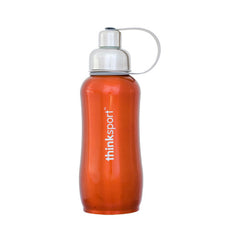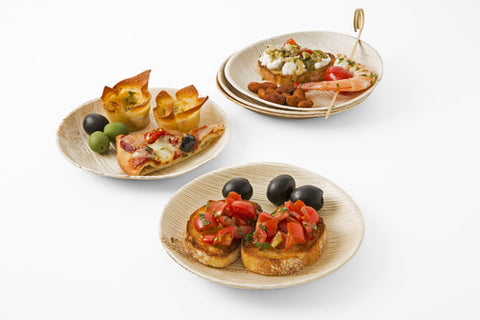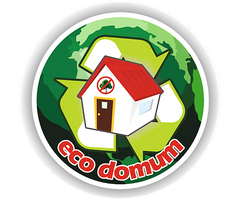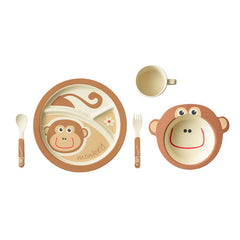- Continue Shopping
- Your Cart is Empty
Coffee Cups Aren't as Green as We Think
For many of us, stopping into a Starbucks or another coffee chain for a cup of coffee is a daily ritual. The coffee comes in a paper cup, and if you do a little reading, you'll see that most chains claim that their cups are environmentally friendly because they're recycled and made from recycled materials.
A recent expose in The Times found that the claims of major coffee chains in London, including Starbucks, weren't based in fact. While some of their cups are indeed made from recycled materials, they are not being recycled as much as the companies lead the public to believe. In fact, only 1 out of every 400 cups used at coffee shops along London's High Street found their way to recycling facilities.
Starbucks went on record after the story broke saying that they and the other coffee chains need to work together to come up with solutions for recycling, not just in the UK, but around the world.
As a coffee drinker, you can do your part to cut down on paper by bringing along your own cup or using a stainless steel bottle like the Thinksport Stainless Steel Bottle, which is suitable for hot beverages and vacuum sealed to keep coffee hotter for longer. You can check it out here. Starbucks will actually give you a small discount for bringing in your own cup from home.
If you own a small coffee shop and want to offer a greener coffee cup to your customers, you can make the switch to Eco Products Hot Cups. Leakproof and heat-resistant, the cups feature a sugarcane exterior that feels and looks similar to paper and a liner that is made out of PLA plastic derived from corn. The cups are 100 percent biodegradable and compostable and are completely paper free. They're available in a number of styles, which you can see here at the Eco Products page.
BPA Is in Most Canned Foods, Study Shows
We've talked about the dangers of BPA in the past in our blog. This additive that is used in plastic and metal packaging has been shown to cause hormonal changes in the body and is now believed to be linked to problems with fetal, infant and child development. Many people are now making the switch to BPA free plastic products and alternatives to plastic like silicone baby bottles and bamboo dinnerware, but a new study shows that simply eating a canned food can expose you to the toxin.
A study conducted by the Ecology Center examined a large number of canned foods, testing to see whether or not there was BPA present in the food inside the can. Roughly two-thirds of all of the foods tested contained at least trace amounts of BPA. Around 71 percent of Del Monte can goods were BPA positive as well as 50 percent of the canned goods from General Mills. Canned goods from other brands, including Campbells, also tested positively.
There were some canned good brands that passed the BPA free test across the board, including:
- Amy's Kitchen
- Annie's Homegrown
- ConAgra
- Eden Foods
- Hain Celestial
After the report was released, Campbells quickly issued a statement saying that the brand will use BPA free packaging for all of their products by 2017. Given the strong negative public outcry over the study, we can hope that other brands will follow suit. In the meantime, health conscious consumers will have to look for canned foods from the brands mentioned above and take steps to limit their exposure to BPA with other products.
Minneapolis Passes Plastic Bag Ban
Plastic bag waste is a major environmental concern. Over 1 trillion plastic bags are used around the world every year, leading to tons of non-biodegradable waste ending up in landfills. Concerns about the eco impact of plastic bags has led several major cities across the U.S. to pass laws to discourage the use of disposable bags. On April 1, 2016, Minneapolis became the latest U.S. city to pass such a green law.
Passed by a vote of 10-3, the new Minneapolis city ordinance will require all retailers to stop using plastic bags with handles as of June 2017. Bags without handles like those used for dry cleaning, fresh flowers and produce will still be able to be used.
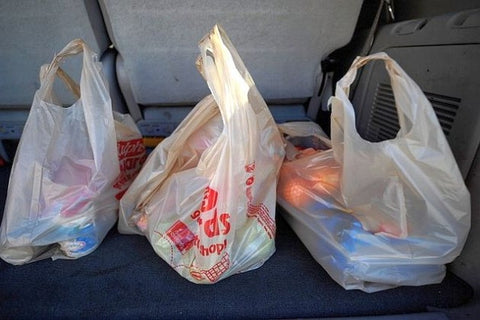
image source: http://wjon.com/minneapolis-council-votes-for-plastic-bag-ban-paper-bag-fee/
One concern about plastic bag bans is that they result in an increased use of paper bags, which contributes to deforestation. To address this problem, the Minneapolis bag ban includes a $.05 fee on paper bags for all customers except those who receive food stamps. Retailers that don't want to pass this fee along to customers have the option to pay $.05 for each bag given out to fund city cleanup programs. Many retailers will likely end up requiring people to purchase the bags in order to avoid incurring the expense.
If you live in Minneapolis or simply want to carry your groceries in a more eco friendly way, check out Chico Bags! Designed especially for carrying groceries, these bags are made from sustainable materials like cotton and hemp. Sold in a set of three, the Chico Bags roll up and fit into an apple carrying case to make them easy to bring with you on the go. You can check them out and buy a set here.
New Report Highlights How Serious Our Plastics Problem
If you're striving to have a greener homer, it's easy to imagine that everyone else in the world is doing the same, that we're all looking out for the good of the environment. Sadly, that's not the case. Even though many people are trying to cut back on their use of plastics and to recycle more, plastic production is still at an all-time high and scientists are warning that something has to change for the sake of the planet.

image source: http://www.plasticsouplab.org
A study recently published by the Ellen Mac Arthur Foundation and the World Economic Forum revealed that plastic production has increased astronomically over the last 5 decades. In 1964, only 15 million tons of plastics were produced worldwide. Jump ahead to 2014, and 311 million tons of plastic rolled out of factories.
The study didn't just examine the massive explosion of the plastics industry. It also made some bleak predictions about the future. The researchers posit that within the next 20 years, the current rate of manufacturing will have doubled. By 2050, the scientists worry that 15 percent of the global annual carbon budget will come from plastics manufacturing and that plastic production will account for 20 percent of the world's use of oil.
During its discussion of the current global state of plastics, the report found that 8 million tons of plastic end up in oceans every year. If things continue at this rate, by 2050 the amount of plastic in the ocean will weigh more than the total weight of all of the fish in the ocean!
What might be equally distressing is that only about 14 percent of plastic packaging ever gets recycled and that overall recycling rates for plastic are even lower.
So what can we do?
First, we all need to continue to take steps to use less plastic, which you can do in your own home with cleaning products, tableware and personal care items from Paperless Kitchen. When you can't replace plastic, look for products made from recycled plastic, and do your part to recycle the plastic items that you use during the day.
Next, we all need to make an effort to let others know about the plastic situation. You could start by sharing this blog post on social media!
Plastic Waste Helping Impoverished Families Afford Housing
Plastic. We know it's not good for the environment, but it's almost impossible to escape it. Even as we take steps to reduce the amount of plastic that we use, millions of pounds of plastic end up in landfills worldwide every year. Now, a company has found a unique use for some of that plastic, and there is a chance that it could solve another major problem facing the world--a lack of affordable housing.
EcoDomum is a startup business that creates a building material out of plastic waste. To create the material, the company seeks out used plastic waste from different sources. The plastic items are carefully inspected to select items that will not give off harmful fumes when they are melted. Items like soda bottles and children's toys are among some of the most frequently used plastics.
image source: http://www.ecodomum.mx
Once the plastics have been selected, they are melted in an oven that reaches a temperature of over 600 degrees Fahrenheit. It takes about 30 minutes for the plastic to complete liquefy, at which point it is put through a hydraulic press that flattens the plastic into panels. These sturdy panels measures 8 feet in length by 4 feet in width by 1 inch in thickness, and EcoDomum can make 120 of them every day. One day's production uses 5.5 tons of plastic waste.
With only 80 panels, EcoDomum's building materials can be used to build one house. The company has partnered with a subsidized housing program in Mexico to build houses for impoverished families. In some cases, families are able to receive a brand new 430 square foot house by paying only around $280.
The prospects of what EcoDomum's building material could mean both for the planet and for society are amazing. Hopefully, the start-up will take off and be able to increase production to begin helping families elsewhere in the near future.
There's Another Toxin in Plastic You Need to Know About
In recent years, public health officials have done a good job educating consumers about the dangerous of bisphenol A or BPA. Many manufacturers of plastic products have stopped using BPA in their products due to concerns that the substance can cause a number of health problems, including asthma, heart disease, infertility, cancer and development disorders in children. Now, a study has concluded that one of the plastic additives being used as a replacement for BPA may be just as dangerous.
The study in question was published in the journal Endocrinology and examines the effects of a substance called Bisphenol S or BPS. BPS is one of the most commonly used alternatives for BPA. During the study, the scientists exposed the embryos of zebrafish to BPS and BPA and observed what happened to them. The brain cells of the creatures exposed to both chemicals underwent similar transformations, and there were disruptions in the genome that would impact reproduction.
Based on the scientific evidence, the researchers concluded that BPS causes harmful affects to the endocrine system just like BPA. While more research is needed to validate their findings, it does point to the fact that not all BPA-free plastics are safe alternatives to the toxic plastic.
Public health experts have spoken out since the release of the journal article urging people to be choosy about the plastic that they use and to find out if BPS is used in place of BPA. The experts also recommend using other types of materials when possible, such as silicone baby bottles like the ones sold by ThinkBaby or bamboo dinnerware.
You can find a number of types of alternative dinnerware for purchase in our tableware department here at Paperless Kitchen.
Offices Will Soon Be Able to Make Their Own Paper
Many companies are now instituting policies to reduce paper waste and encourage recycling. Not only do these policies help companies become more sustainable, but they also serve as cost-cutting techniques that reduce the expense of purchasing paper by reducing printing and other unnecessary uses of paper. Now, there is a new way for companies to become greener and conserve paper--a device that manufactures new paper from old paper right inside of office buildings.
The device in question is called PaperLab, and it was developed by the research and development team at Epson. The first models were set to be produced in Japan in January 2016 with worldwide sales expected to begin later this year.
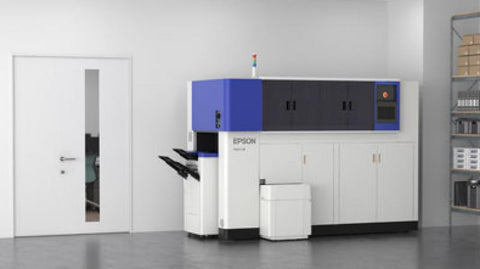
image source: http://www.deccanchronicle.com/technology/in-other-news/090216/epson-s-office-machine-recycles-waste-paper-into-new-paper.html
With PaperLab, companies will be able to load used papers into a special chamber and then process it into new sheets of paper. The machine is flexible, allowing users to set a specific size, thickness and type.
Obviously PaperLab will help companies reduce their cost of purchasing paper and become greener, but Epson has pointed out that it has another big benefit--security. Maintaining client and corporate confidentiality is of the utmost importance for companies today, and many companies struggle with how to keep shredded paper documents secure until they can be picked up by recycling companies. PaperLab will make it possible to immediately recycle shredded confidential documents, eliminating the risk of theft.
There is no official word yet on when PaperLab will be available in the United States or what its cost will be; however, for companies that use large amounts of paper, it's easy to imagine that the unit would pay for itself over time.
Waste Paper Being Used to Clean Up the Earth
Waste paper is a major concern for the environment, and researchers around the world are constantly looking for ways to put it to better use. Now, a team from the National University of Singapore has found a way to use paper waste to deal with another major environmental concern--waste from oil spills.
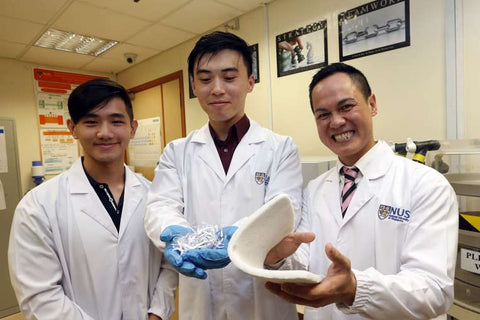
image source: http://www.straitstimes.com/singapore/from-paper-waste-to-powerful-absorbent
The new substance developed by the team is a combination of water, cellulose made from paper waste and a chemical that is exposed to sound waves to fractionate its cells. Then, the mixture is frozen, dry frozen and cured under heat. By the end, the cellulose is transformed into a very light porous material known as an aerogel. Then, it is coated with a chemical that allows the material to absorb oily substances while repelling water. The entire process only takes three days to complete, and it's possible to produce large amounts of it at one time.
The absorbent material developed by the National University of Singapore team can hold up to 90 percent of its weight. As a result, the material could be incredibly useful for cleaning up oil spills. Compared to the absorbent materials used at spill sites today, the cellulose aerogel has a much lower eco impact because it's biodegradable and completely nontoxic.
The researchers at National University of Singapore plan to begin marketing their aerogel worldwide in May. It can also be used for insulation and as a packing material due to its absorbency and its light weight.
Paperless Kitchen Tested: Clean&Green App Review
While you can find plenty of green cleaning products here at Paperless Kitchen, sometimes you need to handle a quick cleaning task and just don't have time to order online. That's when it's great to be able to make your own natural cleaning products at home. Recently, I discovered an app that promises to make it easier to make your green cleaning products. It's called Clean&Green, and I took it for a test drive to find out what it's all about.
What Is Clean&Green?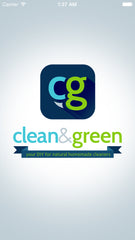
Clean&Green is a mobile app that lets you browse a list of green cleaning recipes. There are six different categories to look through, and all of the recipes are listed in alphabetical order. When you find a recipe that looks interesting, you can click arrow buttons to read step-by-step information on how to make it.
Benefits of Clean&Green
There were some things I really liked about this app, including:
- Free Download. You don't have to pay to download the app, so there isn't any risk in downloading it.
- Variety. There really are recipes for just about anything you might want to clean. You can even find really specific things like crayon remover.
- Easy to Follow. The recipes are written well, so you don't have to scratch your head and wonder what they mean.
- Simple to Use. You can figure out how to use the app as you go. It's very straightforward.
Drawbacks of Clean&Green
- Questionable authority. There is no information about where the recipes come from, and users can't leave reviews. You really don't know if anything on the app will work or not.

- Limited Free Access. You only get access to two of the six categories of cleaning products with the free download: All Purpose Cleaner and Bathroom Cleaner. You can unlock one category at a time for free but it makes you watch a loud advertisement and takes you to another website when you try to do it. If you want to avoid that, you can unlock all six remaining categories for $.99.
- No Ingredient Listings. There isn't an ingredient list at the beginning to make it easy to shop or know if you have what you need.
- A Lot of Ads. This app is littered with ads. They appear at the bottom of the page, and after a few taps you get popups. They cover the entire screen, so it's very easy to end up clicking one and getting redirected.
Final Verdict
We would give this app a 7/10. The content is helpful, but we feel as if it was made mainly for the purpose of generating ad revenue. Not a lot of thought was put into actually making this an authoritative resource for those who want to clean green. Since it's free, it's worth a download and we hope that the recipes will work for you well.
Paperless Kitchen Tested: Go Green App Review
We're back with another green app review! This time, we're taking a look at the app Go Green, which was developed by Web Works. The app is available for Android and iOS devices. The iOS device is compatible with iOS version 2.0 or later, so you can even use it on older models.
What Is Go Green?
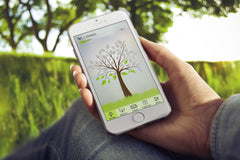
Go Green is an app that shares tips that can help you lead a greener life. The tips cover a wide variety of topics from cleaning to recycling to conservation to choosing eco friendly products at the store. Each time that you sign into the app a new tip is displayed. You can touch an icon to go back and read all of the previous tips if you wish.
Pros of Go Green
Go Green has a number of positive features, including:
- Ease of Use. The app is very straightforward. You actually don't have to do anything but launch it and read.
- Great for Daily Use. This app is a good one for those who want to learn one new green thing per day.
- Useful Information. The majority of the tips are helpful and aren't things you would immediately think of. Generally, the tips go beyond the basic ones provided by most similar apps.
- Completely Free. The full version of Green Tips is free to download and to use. There are no in-app purchases of any kind. There are ads, but they're not obtrusive.

Cons of Go Green
- Inconvenient for Reading Multiple Tips. If you have time to kill and you want to read a number of tips in one sitting, you have to keep exiting the app and coming back. It would be nice if you could flip through and see new tips as well as the old tips.
- Some Tips Are Incomplete. While all of the tips are factual, some of them are greener than others. For example, one tip recommends using a laptop computer instead of a desktop computer to conserve energy. This is accurate but it doesn't tell you that you can't leave the laptop plugged in all the time if you want to conserve.
The Final Takeaway
Based on using Go Green for a few days, I find the program to be one of the better green tips apps on the market today. It's definitely worth taking a look at, especially since it won't cost you anything to try! Give the app a spin and let us know what you think in the "Comments" section.

